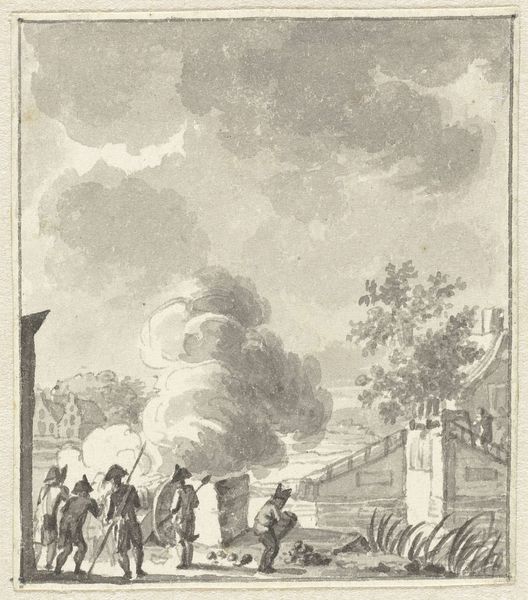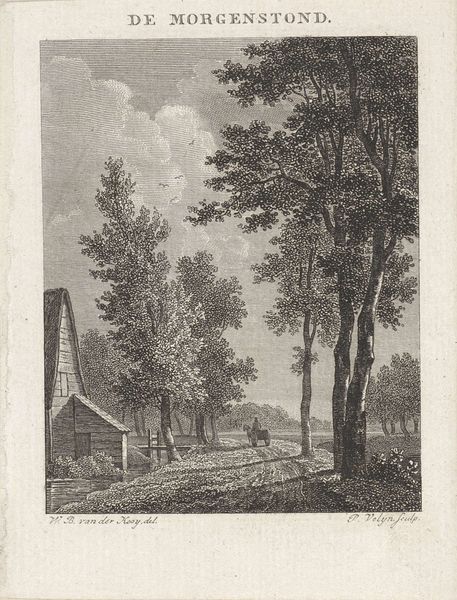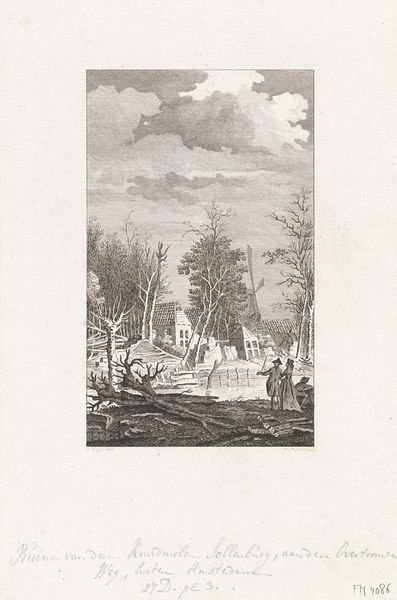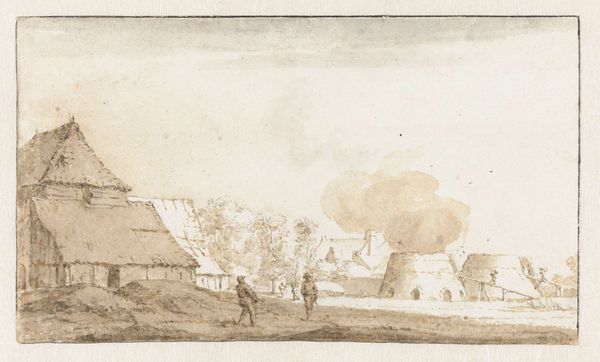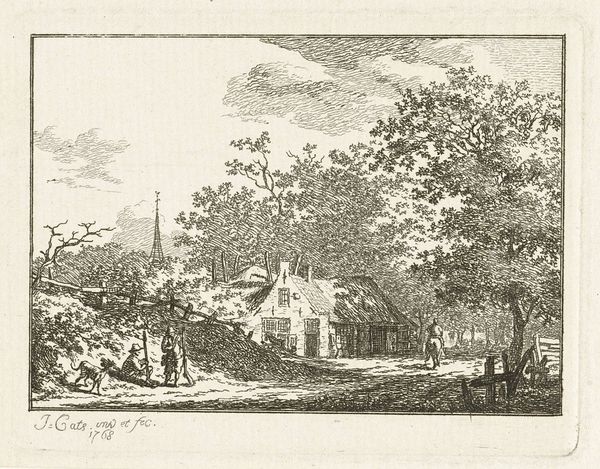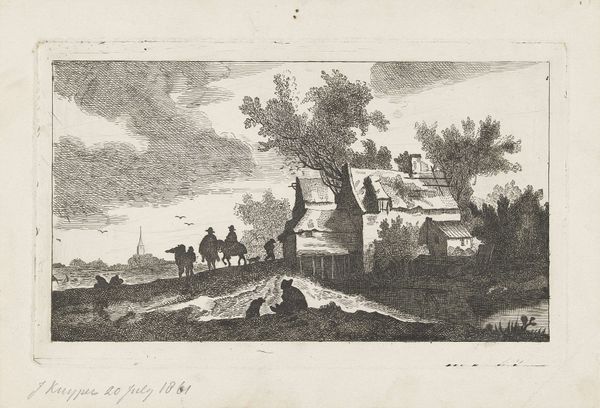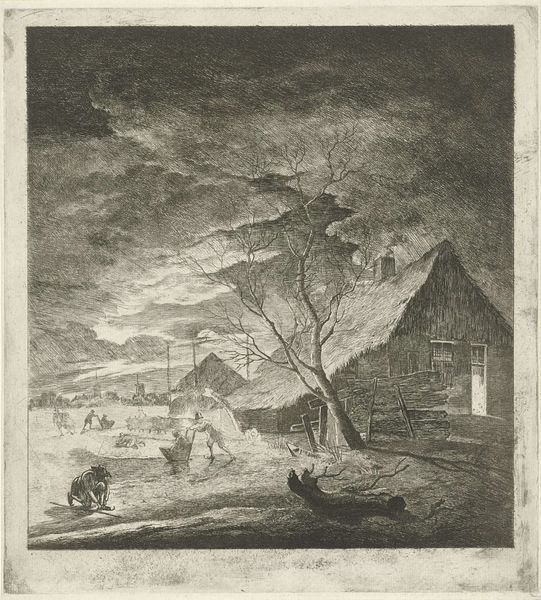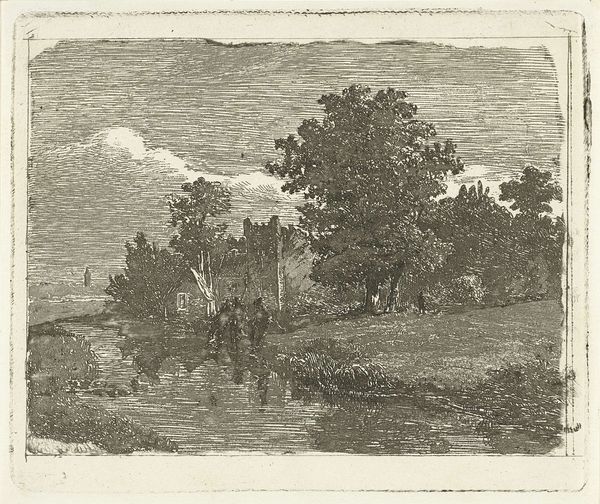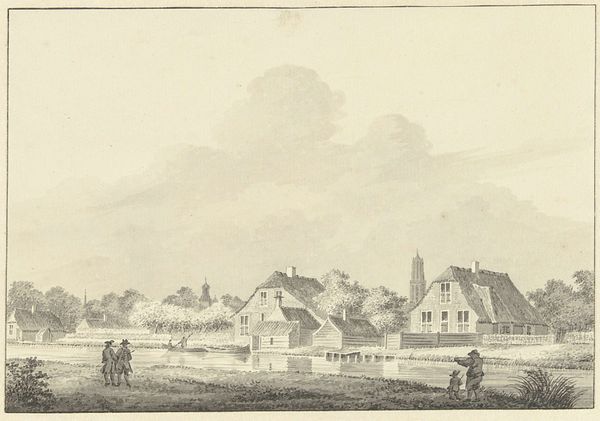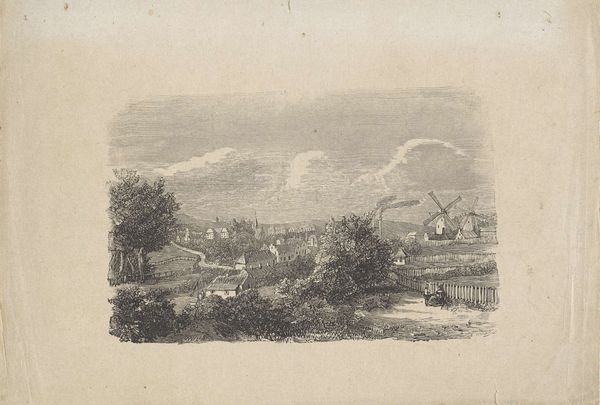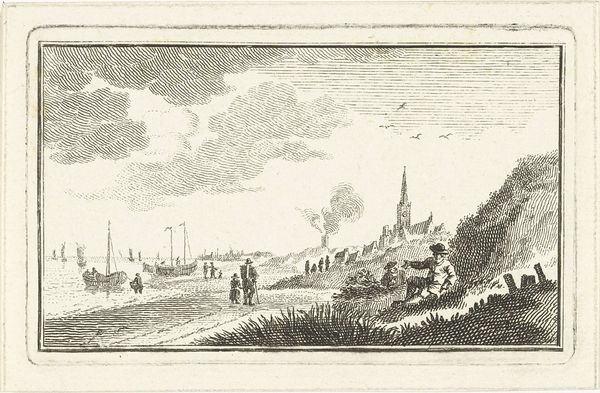
drawing, print, etching, ink
#
drawing
#
neoclacissism
#
narrative-art
# print
#
etching
#
landscape
#
etching
#
ink
#
romanticism
#
history-painting
Dimensions: height 65 mm, width 55 mm
Copyright: Rijks Museum: Open Domain
Curator: "In 't Jaar 1787," or "In the Year 1787," is the title given to this drawing, estimated to have been created between 1789 and 1810. It's a work of etching and ink, here on display at the Rijksmuseum, created by an anonymous artist during the cusp of the Neoclassical and Romantic periods. What jumps out at you? Editor: My first thought is a chill down my spine. It feels desolate, like the air is heavy with gunpowder and unspoken dread. Curator: That's astute. The muted tones certainly contribute to that sense. Look closer—we see an execution taking place. On the left, a line of soldiers at attention, muskets raised; in the center, the victim tied to a post. The small cottage in the background almost feels like a silent witness. Editor: And the cannon! Right beside a figure collapsed on the ground. What's fascinating, and disturbing, is how neatly ordered the violence appears. There is nothing haphazard about the injustice enacted in this historical scene. "In 't Jaar 1787" obviously suggests something particular to that year... What exactly are we seeing memorialized? Curator: Indeed. The drawing refers to the Patriot revolution. During that time, civil war broke out in the Netherlands, between the Patriots, seeking democratic reforms, and the Orangists, supporting the stadholder, William V. In September 1787, Prussian troops crushed the Patriot movement, restoring the stadholder's power. This etching may portray a scene from the violent aftermath, the execution of those who dared to challenge the established order. Editor: So, a snapshot of power suppressing dissent, etched in shades of gray. The choice of the landscape style, even with its Romantic undertones, juxtaposes against the brutal narrative. It highlights how normalized, even scenic, such political violence becomes when entrenched in a culture. There is an echo of today. Curator: Precisely. And even as we dissect the political and historical context, remember this: the artist remains anonymous. This speaks volumes about the dangers inherent in speaking truth to power, especially in times of upheaval. And it asks questions to whom that are enduring for today. Editor: Absolutely. It's a stark reminder that art can be a silent scream, echoing across the ages. Even a relatively small, muted work like this holds immense weight when we unpack its history.
Comments
No comments
Be the first to comment and join the conversation on the ultimate creative platform.

